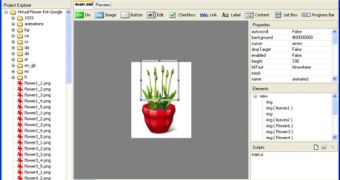Google released today an improved version of Google Desktop SDK, a developer tool that includes the latest edition of Google Desktop Gadget Designer. This utility helps users build their own gadgets, tiny applications that will bring one more function to the stand-alone product. In the past, Google made several efforts to promote the gadgets, adding interoperability with multiple solutions designed by the company. That's why you're now able to implement gadgets to Google Desktop or to Google Personalized Homepage, codename iGoogle, and enhance the functionality of the services. Today's update is especially meant to offer more functions to the developers and enable them to design more powerful gadgets.
"If you're starting to create desktop gadgets, be sure to try out the new and improved Google Desktop Gadget Designer, included with the latest Google Desktop SDK. It makes creating that great gadget idea of yours a breeze, with drag & drop elements, property editors, and built-in script editing," Andrew Scherkus, Software Engineering Intern, sustained today.
Among other important updates, the company modified the interface of the application and its functionality, adding some new control options. For example, you're now able to close the tabs using your middle-click and obtain more information straight from a tool tip opened from the tab. So, these are the most important changes added to the latest version of the application and published by Google:
- Additions to the API, such as listbox and progressbar, are supported. - The designer UI is more configurable, with variable-size panes and retained window position/size. - You can find and replace text and go to a specific line. - The properties list is sorted in alphabetical order. - The designer tabs have tool tips and can be closed with a middle-click. - You can choose whether to see a web page at startup; the new default home page lets you search Google Desktop documentation or all Google Desktop websites (including this blog). - New project files are UTF-8 encoded. - You can specify preferences, such as whether to load the most recent project at startup.

 14 DAY TRIAL //
14 DAY TRIAL //